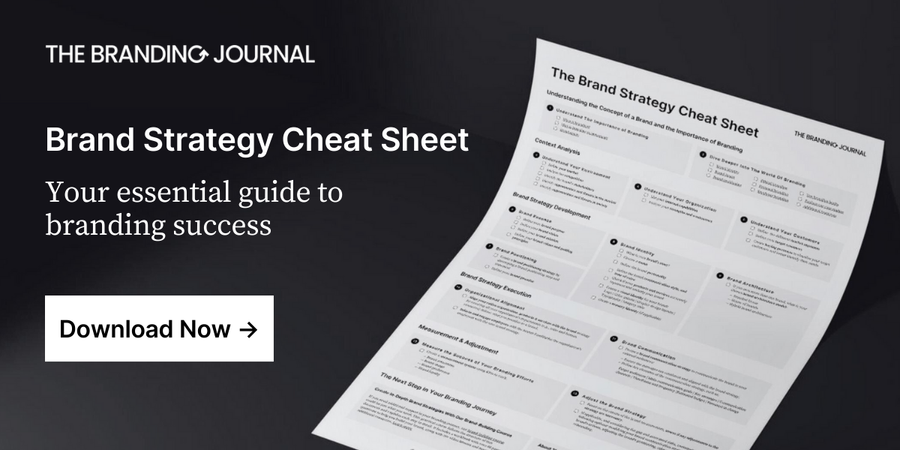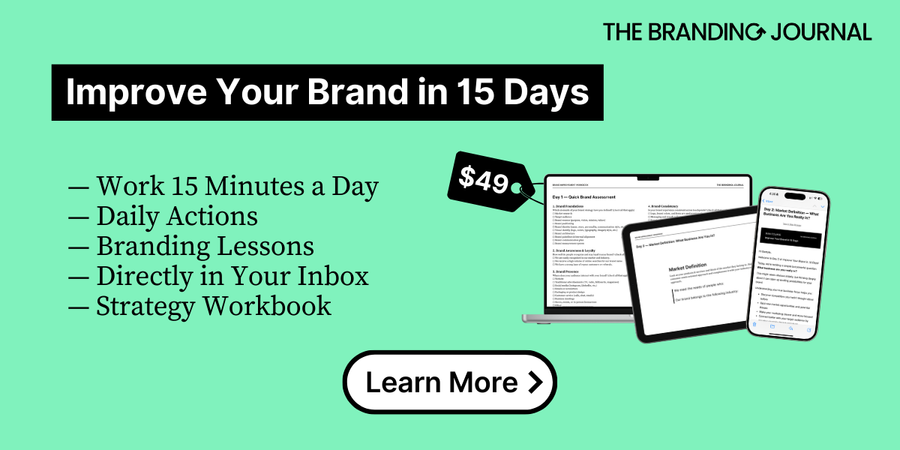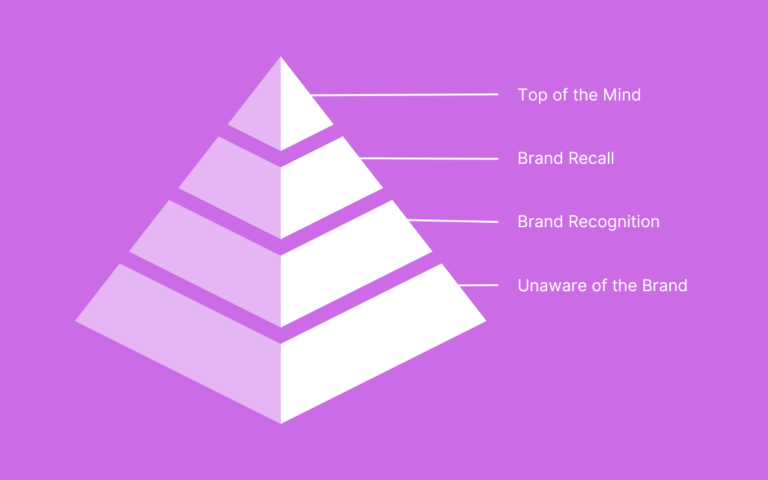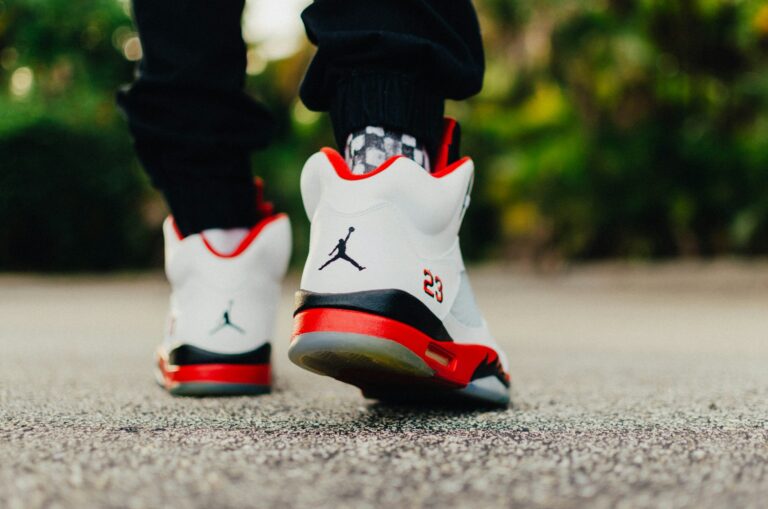Unsure about the meaning of “branding”? Don’t worry! Branding is one of those marketing concepts that are a bit vague and can quickly become confusing, even for people who have studied marketing.
Today we are going to take a look at “what is branding” and try to provide a clear answer with simple words and examples!
In order to understand the concept of branding, first we need to know what products and brands are. Let’s go!
Proven Systems for Business Owners, Marketers, and Agencies
→ Our mini-course helps you audit and refine an existing brand in 15 days, just 15 minutes a day.
→ The Ultimate Brand Building System is your step-by-step blueprint to building and scaling powerful brands from scratch.
Table of Contents
Product definition
“Broadly, a product is anything that can be offered to a market to satisfy a want or need, including physical goods, services, experiences, events, persons, places, properties, organizations, information, and ideas” (Kotler & Keller, 2015).
This means that a product can be anything from a hotel stay, a flight, a language course, to clothes, food, a toothbrush etc.
To illustrate the definition of a product and the role it occupies in defining branding, we will use the example of water:
Water is a freely available resource that is essential for every human being to live and survive. Yet it became a product the day humans and companies started to commercialize it, for example by selling mineral water in glass and plastic bottles.


But water always looks the same, isn’t it? It is always in a liquid state, and transparent. So, how can different companies sell the same product but still convince people to purchase their bottled water instead of the one from the competition?
The answer is: by creating a brand.
Brand definition
“A brand is a name, term, design, symbol, or any other feature that identifies one seller’s good or service as distinct from those of other sellers” (American Marketing Association).
You can consider a brand as the idea or image people have in mind when thinking about specific products, services, and activities of a company, both in a practical (e.g. “the shoe is light-weight”) and emotional way (e.g. “the shoe makes me feel powerful”). It is therefore not just the physical features that create a brand but also the feelings that consumers develop towards the company or its product. This combination of physical and emotional cues is triggered when exposed to the name, the logo, the visual identity, or even the message communicated.
A product can be easily copied by other players in a market, but a brand will always be unique. For example, Pepsi and Coca-Cola taste very similar, however for some reason, some people feel more connected to Coca-Cola, others to Pepsi.
Let’s illustrate this again with our water example. The product sold is water, but in order to convince people to purchase a particular water, companies developed different water brands, such as Evian, Perrier, Fiji or Volvic. And each one of these brands provides a different meaning to the product water:
– Evian makes you feel young
– Perrier is refreshing, bubbling and sexy
– Fiji Water is pure, healthy and natural
…and so on.
In the end, a brand is a person’s gut feeling about a specific product or company. Each person creates his or her own version of it, and some brands increase or decrease in popularity because of how consumers feel about them.
Branding definition
What is it?
“Branding is endowing products and services with the power of a brand” (Kotler & Keller, 2015)
Branding is the process of giving a meaning to specific organization, company, products or services by creating and shaping a brand in consumers’ minds. It is a strategy designed by organizations to help people to quickly identify and experience their brand, and give them a reason to choose their products over the competition’s, by clarifying what this particular brand is and is not.
The objective is to attract and retain loyal customers and other stakeholders by delivering a product that is always aligned with what the brand promises.
Who does it affect?
- Consumers: As discussed above, a brand provides consumers with a decision-making-shortcut when feeling indecisive about the same product from different companies.
- Employees/shareholders/third-parties: Besides helping consumers to distinguish similar products, successful branding strategies are also adding to a company’s reputation. This asset can affect a range of people, from consumers to employees, investors, shareholders, providers, and distributors. As an example, if you don’t like or don’t feel connected to a brand, you would probably not want to work for it. However, if you feel like the brand understands you and offers products that inspire you, you would probably desire to work for it and be part of its world.
How can it be done?
Companies typically use various tools to build a brand.
Branding can be achieved through the definition of the following elements:
- Brand essence and core identity: This includes the brand’s purpose, vision, mission, values, and guiding principles
- Brand positioning
- Brand promise
- Brand identity: For example, the brand’s name, personality, communication style and tone of voice, visual identity design (including logo design, color palette, typographies, etc.)
Additionally, it’s essential to devise a brand communication plan to bring the brand to life and allow it to be experienced by different audiences. The brand also needs to be aligned with all aspects of the organization to ensure its coherence and strength. This part of branding, which involves implementing the brand, often overlaps with marketing strategies. Some examples include:
- Web design and online presence
- Advertising and communication campaigns: e.g., newsletters, social media ads, TV commercials, radio, magazines, outdoor ads
- Product and packaging design
- In-store experience
- Sponsoring and partnerships: e.g., sponsoring events, influencer marketing
- Customer service
- Workspace experience and management style
In our example of branding water, packaging design and advertising are perhaps the most powerful tools used by marketers:
Packaging design is the silent salesman that will grab busy consumers’ attention in-store. It informs consumers about the product’s properties and visually differentiates the brand from the competition on-shelf.
An interesting example is Fiji Water, which managed to create a bottle design that perfectly reflects the brand’s values: transparency effects convey purity, while the tropical flower and the blue background evoke nature. The bottle design is elegantly crafted, conveying a sense of exclusivity.
Since 2022, the brand has been using 100% recycled plastic for their packaging and this aligns with their sustainability commitment. However, as a side note, we believe that additional enhancements could be made by exploring refillable solutions or incorporating natural materials to the bottle. These actions would further strengthen the brand’s alignment with its values and promise.
Advertising is a powerful tool to create and shape a brand universe as it is very visual and tells a story about the product/company. Here are some examples of branding water through advertising:
Evian makes you feel young:
Perrier is refreshing, bubbling, and sexy:
Fiji Water is pure, healthy, and natural:
Conclusion
In very simple words, a product is what you sell, a brand is the perceived image of the product you sell, and branding is the strategy to create that image.
I hope this article helped you to have a clearer idea of what branding means. If you have any comments or suggestions to improve the article, please don’t hesitate to share your thoughts in the comments below!
References
- Kotler & Keller: Marketing Management (2015)
- American Marketing Association (AMA)












Great article. Good idea to take water as an example.
Simple and well laid out article. Loved reading it! Thanks.
Very glad you enjoyed the article Ryan! Hope to see you around soon!
Really good article
ty so much , helpful !
Great information. Thanks. “GLOBEARTH “
I earned my master in Development Journalism. My 10 years experience is about electronic and print journalism. Now I am being interviewed for the role of newly established air line brand Manager. I was not clear about what actually branding is , how to start. After reading the subject article , I am clear now and make my presentation best for the second phase of interview. BUT I feel still many questions I want answers.
Hi, I am glad the article helped you. Please do not hesitate to share your questions, we will do our best to answer them!
Very clear and crisp !!
I thoroughly enjoyed reading your article. It was simplified, easy to read and I definitely learned. The article cleared up my misconceptions.
Thank you Angela!
Hi Marion!!! I love this article, it was very helpful! I tried to find the branding AMA definition you posted, but I couldn’t find it on their website… Can you tell me where did you find? I’m writing a project about this subject, and I want to use more of their definitions… Thanks you so much :)
Brand definition* (sorry :p)
Hi Raissa! Thank you. Here is the source: https://www.ama.org/resources/Pages/Dictionary.aspx?dLetter=B&dLetter=B
thanks for this article
i love this quote
” A brand is the set of expectations, memories, stories and relationships that, taken together, account for a consumer’s decision to choose one product or service over another.1 Seth Godin”
Wow.outstanding really..
The way you wrote is unique,user friendly and so much easy.i never ever saw this type of article …
Thank you so much…
Thank you Bikram for the kind words. Happy that you liked it!
Dear Marion.
Great information!, smart way how you explained it. What will you do?.
You have sales numbers.
You have the big data of your costumer (General information)
You have many brands. (form others, you are a reseller).
You dont have a specially department of marketing. Or any other specially advise or any other specially resource.
You have many stores.
What will you do, and how do you do?. To improve the sales. Any Idea?.
Thinking about a Latin America Market.
Greetings.
Hi Manuel,
Thanks for your feedback! In you are interested in growing your brand, you could hire a branding agency to support you with this.
Check our Top Branding Agencies article: https://www.thebrandingjournal.com/2015/04/what-are-the-top-branding-agencies-in-the-world/
Some are based in Latin America.
Simple and to the point. Very helpful as I am reviewing some of the concepts.
Thanks for the post!
Thanks for answer.!!!
But, I was thinking about some fast ideas from your experience , actually there is not any budget for that in my company.
As you probabily know some stores does not think about the important of a Brand manager or simlilar, then they don´t make efforts to take money for that.
I have read some real stories in your page about good and bad branding. Thanks for share!!!.
I apreciate your previous answer.
Extremely useful. Thank you!
Thanks for this helpful article. Very straightforward and easy to understand.
Article was very informational, great example to use water!
Very interesting and useful article :) great idea using an example during the entire article
Great Article!!! You really made me understand what brand and branding are all about. Thank you.
I loved it
Great clarity, just what a ‘start up’ needs to know. Thanks
Insightful read. Gives a perspective on the why & what of branding..
Interesting!
Very helpful article. The clarity is on point.
thnx for the informative article,now i have an insight of what branding is.
Am glad I came across this article even for the first time of searching for introduction and ideas on branding…
Reading this article makes me feels like a professional Brand designer coupled with my 7years experience in Logo and Graphic Designs
I have been using all the steps and they are all working I can now say something professionally meaningful when am asked about branding with the detailed information, examples, and descriptions I have learned here.
Thank you, Marion, for writing this article, I will follow your post from this time on for more marketing and branding information.
thank you so much you helped me a lot
Very meaningful and comprehensive article. I gained a lot of information from this article for my M.Phil thesis
Very grateful to you as it helped me understanding about ” branding ” clearly. Appreciate your simple technique to make understand the readers. Thank you very much.
Insightful read. Very clear and crisp !!
Thank you! this article was simple and useful to understand these concepts, I think was successful thanks to water’s example. great idea !
“Branding is endowing products and services with the power of a brand” (Kotler & Keller, 2015)
Can I have the full reference for this, please?
Of course, it’s the book Marketing Management (2015 edition) from Kotler & Keller. The references can be found at the end of each article.
You gave clarity to the concept of brand and branding. Thank you
My brother suggested I might like this blog. He was totally right.
This post truly made my day. You cann’t imagine simply how much time I had spent
for this information! Thanks!
Thank you, very helpful :)
Very useful article. I appreciate u for this post. I try to figure out what is branding and how to use it for my website and this article help me a lot. Thanks!
Agreed, sometimes to rebrand yourself or a company can be very time consuming and tiring. I was having a lot of trouble creating a fresh logo to reach the audience I wanted, but saw an add for https://nninjas.com and they took care of it so quickly. Hope this helps you out with your website problem.
Enjoyed. A good read! Thank you.
Thanks for sharing the article. Branding is a very important concept for target audience, explained in a detailed way.
Awesome post.
The best explanation so far in my search.
Excellent content! You have certainly explained what branding is. Thank you!
This is an interesting article, good work, keep it up.
Maintaining a solid corporate identity not only helps your customers but, your employees and potential investors as well. When your business has a positive corporate identity, it will attract investors, motivate and encourage your employees to stay with you and refer their family or friends to your business.
Very insightful article, branding is so important in today’s business right from day one of planning a company. Thank you for writing this, I enjoyed the read!
This One Article helps me to understand the complete branding methods
Very informative and easy to understand. Great samples too.
Breaking down the points bit by bit really helped us to upgrade our branding. Hope you have an amazing day, thebrandingjournal!
Very insightful article, branding is so important in today’s business right from day one of planning a company. Thank you for writing this, I enjoyed it a lot.
Found this really interesting, thanks for sharing!
Thanks for providing such insightful information. The term “Branding” is very vast in itself and people really need to know the true meaning of it. You have done a fantabulous job by defining and explaining things very nicely. Really appreciate your hard work.
Thanks for the article. Its nice.
This has to be the best article I have ever read. thank you so much for uploading this
really helped for my MBA assignment…thanks so much the definition!!
That’s fantastic! Thank you for taking the time to express yourself and for sharing your knowledge with us. I’m excited to learn more.
Once you have established your brand, you need to ensure you use it in all aspects of your business. Every page of your website needs to display your logo and use your fonts and color palette.
I was very confused about branding but your post cleared my confusion and I am glad I found your content on the internet Thanks for sharing.
Branding concept made simple and uncomplicated! Thank you!
I am studying digital branding and marketing research and I really enjoyed reading this article. Thank you.
Very informative blog. Simple, effective, and useful too. Continue to enlighten us with your knowledge. Thanks for sharing…
Nothing but thank you
Such good article. Thanks you so much. It helped me lot to understand what is a brand, a product and branding. You did it very well !
Thank you Marion for this succinct article. Your simplified narrative greatly enhanced my comprehension of branding.
Really appreciate your work.
Great article precise and informative.
Thank you.
Those who are able to sell tap water bottled and make us feel like we’ve gotten value are skilled storytellers. What I find extremely interesting about this article is how you’ve talked about the characteristics of each’s brand’s target market. Too many brands, in the race to grow market share, have lost this unique identifying in their brand storytelling. Thanks for giving us insight.
Great work Marion !
I love the article so much. Very simple and clear.
Hi Marion!!! very nice article on banding. Keep it Up !
Great article it was very helpful
Interesting article, however in your section “How can it be done?”, don’t you mix with Marketing strategy? I got confused.
Thank you for your comment and for bringing up this excellent question. Branding and marketing are indeed related, but they aren’t exactly the same.
Branding involves defining who you are as a brand – which includes elements such as purpose, values, positioning, and identity, among others. However, it’s not enough to just define a brand; it’s also crucial to communicate it and experience it through a brand communications plan. This aspect closely ties in with the marketing strategy, as marketing is also about promoting your business or brand to the world.
In the “How can it be done?” section, we discuss tools for both defining a brand and communicating it to external audiences. Some of these tools, like advertising or partnerships, overlap with marketing strategies, as marketing is a key method of communicating your brand to the public.
Branding is part of marketing, and both branding and marketing work hand in hand: effective marketing relies on strong branding to articulate a compelling message, and good branding is enforced and sustained by effective marketing strategies.
I hope this clarifies the difference! We will modify the article to make the distinction more clear and easier to understand.
This was very useful
Thank you
This is definitely one of the most succinct and clear write up on branding that I’ve ever come across.
Thanks
Thank you Temitayo – much appreciated!
Insightful and straightforward.
Thank you Abdul
I really like how you explain branding. Straight to the point and the example of water makes so much sense. You could add liquid death, as they went even further with branding water.
Thank you Nine for the feedback and suggestion. Very nice inputs!
Thank you so much dear Marion for your clean cut article. In 6 hours thorough study, it helped me short down, clarify and create the branding master plan for my new startup. Bless you.